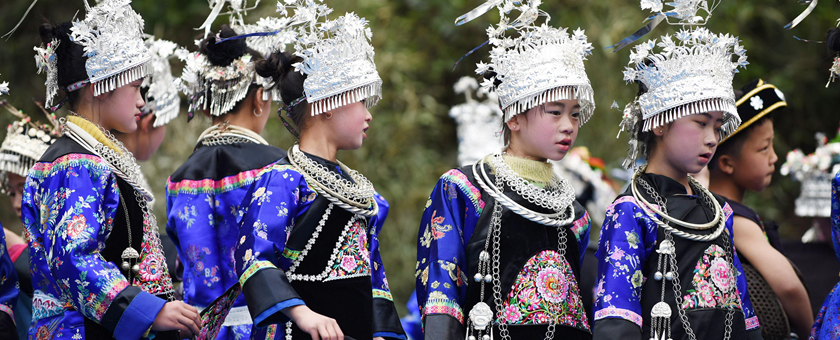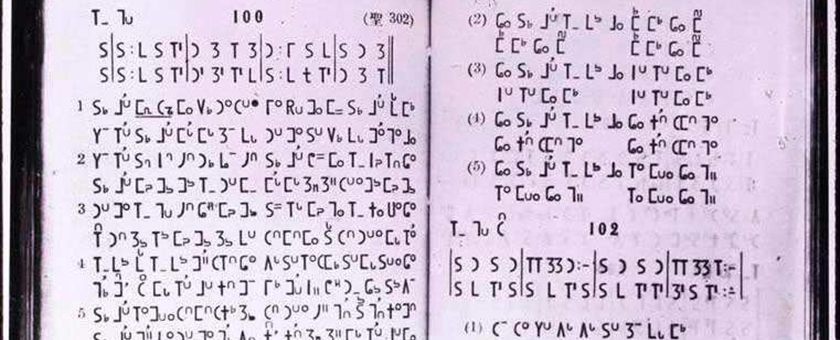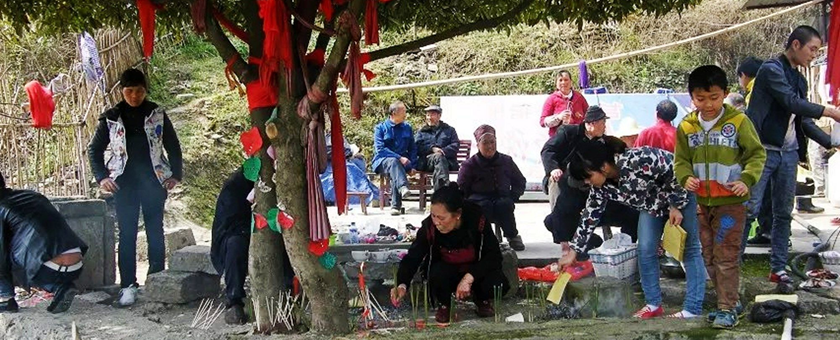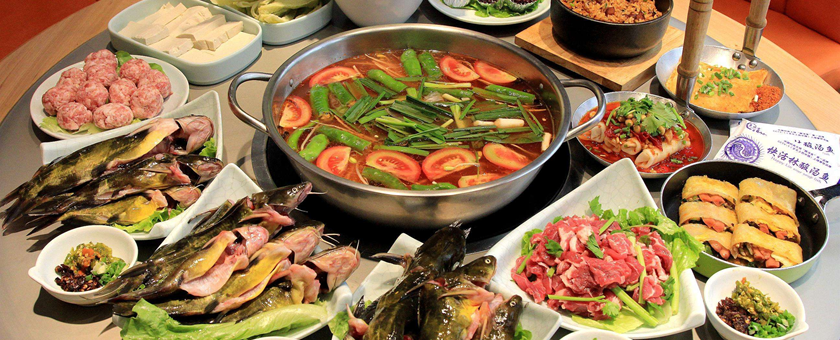info@chinaadventure.org
86-18008011324
Search
Miao people, an ancient ethnic group, are scattered all over the world, mainly distributed in Guizhou, Hunan, Yunnan, Guangxi, Hubei, Sichuan and Guangdong provinces, as well as the countries and regions in southeast Asia, such as Laos, Vietnam and Thailand. In the 2010 Chinese census, the population of Miao ethnic group in China was 9426,007, ranking fourth among ethnic minorities. Miao people used to believe in animism and worship ancestors or dragons. Now some of them are Catholic or Christian.

History of Miao Nationality
According to historical documents of Miao people, the ancestors of Miao people first lived in the middle and lower reaches of the Yellow River, and their ancestors were Chi-you. In the "Three Miao" period, they migrated to the Jianghan Plain, and then due to war and other reasons, they gradually migrated southwards and westward, entering the southwestern mountains and the Yunnan-Guizhou plateau. Since the Ming and Qing Dynasties, some Miao people migrated to southeast Asian countries, and in modern times they migrated to Europe and America from these places.

Language and Character
Miao language belongs to the Miao branch of the Miaoyao language family of Sino-Tibetan languages. Early 50's, the Chinese Academy of Sciences, ethnic languages investigation through on-the-spot investigation, the second task force of local Hmong formation is roughly same, and the voice on the science, the characteristics of different dialects could be divided into three major Hmong, namely: the West Hunan Dialect, Guizhou Dialect, East Sichuan Yunnan Dialect (also known as the eastern, central dialect, western dialects), and the seven times dialect, 18 kinds of dialect. Although there are some differences between the dialects, the interlinked parts still account for more than 60%.
It is difficult to verify these legends that the Miao people once had a script in ancient times, which may have the same origin with Chinese characters. At the beginning of the 20th Century, some Miao intellectuals created some dialects to develop the cultural education of the Miao people, such as the square Miao written by Shibantang in west Hunan, the shorthand Miao written by Shi Qigui, and the Miao written by Long Shaohua in Guizhou using international phonetic symbols. Some foreign missionaries also created some Miao languages for the purpose of missionary work. However, due to the restrictions of various conditions, the Miao culture could not be carried out among the Miao people. In addition, the Miao people in southeast Asia used a Latin Pinyin Miao language invented by French missionaries, which later developed into "International Miao Language".

Religion
Miao people have their own religious beliefs from a very early age. After a long history of development, different areas of Miao people have different religious beliefs. Some Miao areas are blocked by traffic and Miao people believe in primitive religion. There are also minority Miao areas, such as Weining, Shimenkan and Yuanling in western Hunan in modern times. Due to the influence of foreign missionaries, some converted to Catholicism and Christianity. But generally speaking, the majority of the Miao people believe in the primitive religion which has been formed for a long time, including nature worship, totem worship, ghost worship and ancestor worship.

Diet
The two flavors of hot and sour are indispensable in the life of Miao Nationality. In the past, due to the lack of salt in the mountains, so many Miao people eat light food all year around, until the sour and spicy seasonings are introduced. Miao people in particular like to eat acid food. Almost every household has homemade acid soup, pickled cabbage, and pickled fish. Miao people like drinking as well. In many Miao regions, there is a custom of singing wine songs.

Custom
Miao people pay attention to etiquette, especially the way of hospitality. For example, when a guest comes to visit, the host will kill a chicken or a duck to entertain and feed the guest. If the guest is coming from faraway places, the host will first invite the guest to drink a kind of wine called "Horn Wine". After eating the chicken, the head is presented to the elder, who in turn presents the drumstick to the younger. Another common custom is the sharing of chicken and duck hearts, which is unique to Miao people. The oldest man picked up the chicken and duck hearts with his chopsticks and gave them to the guests. However, guests cannot eat the whole chicken heart. He or she must share the heart with the elders who give it to him or her. Glutinous rice cake is a traditional dessert for Miao people when they are in love and get married. It is also used as a Valentine's Day gift for lovers to express their feelings.

House Style
Due to its unique history of migration, Miao ethnic group has formed its own unique architectural style in the construction of materials and houses. Miao people like wooden buildings, generally for three-layer building. The first floor is usually reserved for captive animals; the second floor is for family and the third floor is for granary. In parts of southeast and northern Guizhou, there is a comparatively special forms of housing, called "Diaojiao Building (stilted building)".

Festivals
Miao people have the Spring Festival, Flower Mountain Festival (May 5), New Rice Appreciation Festival (June to July), Tea Gathering Festival , Lusheng Festival and so on.
According to Miao customs, the New Year begins in October. Therefore, the most important Miao festival, Miao New Year, is usually celebrated at this time. Miao New Year celebration in Leishan, Guizhou Province, is the biggest of the Miao festivals. During the event, visitors can enjoy the charming Miao customs through a variety of ethnic activities. The festival parades include Hmong girls and women dressed in traditional Hmong costumes, traditional Lusheng music (a musical instrument made of bamboo), bull fights, horse racing and, of course, lots of singing and dancing.

Culture
Miao people have a highly diverse culture. They like singing and dancing and have a highly developed folk literature. Their songs are unrhymed and vary in length from a few lines to more than 15,000 lines. They are easy to understand and are very popular among the Miao people.
Lusheng is their favorite instrument. In addition, the flute, drum, mouthpiece, xiao (a vertical bamboo flute) and suona are also popular. Popular dances include Lusheng dance, drum dance and bench dance.
Miao people created a variety of colorful arts and crafts, including cross-stitch, embroidery, weaving, batik and paper cutting. Their batik technique dates back 1000 years. First draw a pattern on the white cloth with a knife dipped in hot wax. The cloth is then boiled in the dye. The melted wax left a white pattern on a blue background. In recent years, as technology advances and people can print more colorful patterns, many Miao handicrafts have been exported.

Taboos
1. Miao people will toast when others come to visit. If you are not good at drinking, they will take a symbolic sip.
2. Don't step over your child's head to make sure he grows taller.
3. Pregnant women should not eat the meat of old cattle, sows, roosters or young cattle.
4. When pregnant women gives birth, avoid outsiders to enter.

we’ll reply you in 24 hours!
Copyright © 2012-2024 All Rights Reserved to chinaadventure.org